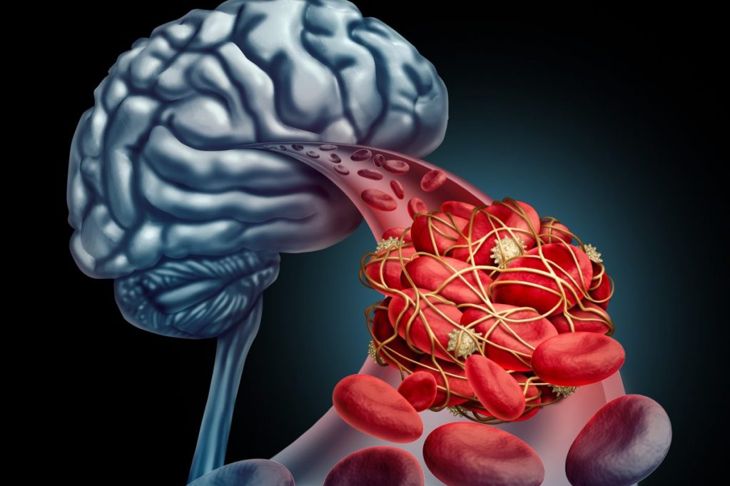Wallenberg syndrome is a rare condition that affects the nervous system and causes a variety of neurological symptoms that vary in severity from person to person. Many people find their symptoms improve over time, while others experience lifelong neurological problems. Doctors may also refer to Wallenberg syndrome as lateral medullary infarction because a stroke in the lateral medulla region of the brain is a common cause. However, it’s not always possible to say for certain why a person has developed the condition.
Symptoms
The nature and severity of the symptoms of Wallenberg syndrome depend on the cause and exact location of the brain damage. Many people with the condition lose the ability to feel pain or temperature, or experience weakness or numbness. These changes in sensation usually occur on one side of the body. The person may also have trouble swallowing, vomit, or develop uncontrollable hiccups. They may also have difficulty balancing and develop a hoarse voice.
Wallenberg Syndrome and Horner Syndrome
Sometimes, a secondary condition called Horner syndrome is a symptom of Wallenberg syndrome. The signs of Horner syndrome include constricted pupils or differently sized pupils, drooping eyelids and eyes that appear sunken. It can also cause significantly decreased sweating on one side of the face. There is no known cure for Horner syndrome. However, the symptoms may improve upon treatment of the underlying cause Wallenberg syndrome.
Causes
Wallenberg Syndrome is most commonly caused by a stroke in the brain stem. However, trauma to the vertebral artery, a blood vessel in the neck, can also prompt the condition, as can an aneurysm or inflammation in the artery. Head injury, multiple sclerosis, metastatic cancer, and varicella infections can cause Wallenberg syndrome to develop. In rare cases, an unusual form of tuberculosis — brain stem tuberculoma — precedes the condition.
Risk Factors
It’s not yet fully understood why some people develop Wallenberg syndrome and not others. However, research notes a link between conditions that often lead to strokes and those that lead to Wallenberg syndrome. These associated conditions include artery disease, heart disease, and blood clots. Experts also believe minor neck trauma can increase the likelihood of Wallenberg syndrome, especially in people younger than 45.
Diagnosis
Doctors ask patients for full descriptions of their symptoms and conduct an examination to check for any physical signs, such as one-sided weakness. A medical history will help them assess the likelihood of Wallenberg syndrome. If this is probable, the doctor may order an MRI or CT brain scan that will allow them to determine whether the person has had a stroke, suffered an injury, or has another condition that might cause the symptoms.
Therapy for Swallowing Problems
Treatment for Wallenberg syndrome often focuses on relieving symptoms and improving quality of life. If the person has difficulty speaking or swallowing, he or she may undergo treatment by a speech therapist. Severe swallowing difficulties can lead to malnutrition over time. In this extreme situation, the patient may require a feeding tube to make sure they receives adequate nutrition to remain healthy.
Treatment with Medication
Depending on the cause and symptoms an individual presents, a doctor may prescribe certain medications. Painkillers can manage pain and discomfort, while blood thinners can shrink blood clots and prevent future blockages. Some people with the condition benefit from anti-seizure drugs.
Surgical Treatment
In rare cases, a person with Wallenberg Syndrome may require surgical treatment if they have a blood clot. Surgery is usually reserved for severe forms of the condition, or after other methods of treatment fail because the brain stem is extremely difficult to access surgically. During the operation, the surgeon will carefully remove the blood clot, which should alleviate symptoms.
Treating Hiccups
One of the most difficult symptoms to treat is persistent hiccups, which can progress to a severe and painful experience that can affect quality of life. Often lasting for weeks, they can prevent normal eating and drinking and interrupt sleep. There is no guaranteed method of treatment, although muscle relaxants can help some people.
Prognosis
The outlook for people with Wallenberg syndrome depends on the location of their brainstem injury and its severity. Some people make a full recovery within six months of treatment. Others may be left with permanent or chronic neurological symptoms. A doctor can often predict how well a person will recover based on their scans and test results.

 Home
Home Health
Health Diet & Nutrition
Diet & Nutrition Living Well
Living Well More
More




















